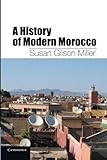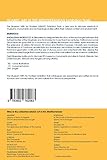Moroccan author Tahar Ben Jelloun once wrote that in Morocco, “it’s possible to see the Atlantic and the Mediterranean at the same time.” In some ways Ben Jelloun’s quote alludes to the unique positioning of Morocco as a country bordering two oceans, and one which in many ways has come to represent a constructed meeting point of east and west. The exhibition Le Maroc Contemporain, currently on show at the Institut du Monde Arabe, seeks to explore the nature of contemporary life in Morocco, and the challenges faced in healing the scars of its colonial past, resisting modern cultural imperialism and affirming authenticity.
The show brings together the work of over eighty Moroccan artists in the largest temporary exhibition ever organised by the institution. It runs concurrently with the Louvre’s Le Maroc Mediéval which focuses on Morocco as part of the Arab Empire. Within Paris, the Louvre’s exhibition deals with the colonial past, whereas the Arab Institute deals with the postcolonial present. An interesting divide therefore presents itself between the two exhibitions, and Morocco’s own history as a contributor to one empire, and the subject of another.
La ronde de nuit, Mohamed El Baz, 2014.
Sans Titre #5, Safaa Mazirh, Maroc 2013.
Rather than adopting a chronological method of presentation, the exhibition is arranged according to themes. Amongst these are emigration, incarnation, religion, and others which stretch as far as the Arab Spring and gender relations. In line with its goal of presenting insight into the various aspects of contemporary life in Morocco this would seem to be the logical way of structuring such an exhibition.
Notions of diaspora, movement, and shifting territories are evident from its beginning. The first section entitled emigration showcases art concerning the migration of Moroccans from North Africa to mainland Europe, highlighting the risk involved, and highlighting the cost of such movements and the level of loss associated with the perennial stories of sunken boats full of migrants. Hassan Ediar’s sculpture, "Caravane Carbonisé," speaks to this very phenomenon, as fragile wire boats sit on a bed of salt, each precariously balancing a large lump of coal on two or three feeble sticks. Other pieces including Leila Alaoui’s short film, "Crossings," tell of the various experiences of migration through film testimonials, and explore the numerous reasons Moroccans are often forced into migrating to Europe.
Sections dealing with the impact of religion on Moroccan culture, and male/female relationships, come to the fore in much of the work presented, especially in sections related to questioning faith, and the notion of “being” both Moroccan, and in Morocco. The photography collection by Ali Chraibi, entitled "The Jocanda Series," presents a gritty realist view of contemporary Morocco which places the photographic subject very much in the context of their surroundings, to present a sense of the every-day Morocco. Chraibi’s photos are penetrating in their simplicity, yet create a sense of space through the often decentred positioning of the subject (pictured below).
Sans titre, Série La Joconda, Ali Chraibi, 2005
The scope of work on offer not only reflects on Moroccan existence within its defined territories but also the global Moroccan diaspora, and other struggles in the Arab world, including the Israel/Palestine conflict, and the global Islamic practice of the Hajj. The inclusion of such territorially unbounded pieces speaks to a contemporary Morocco which transcends borders and embraces diaspora. Of note among these works is Mohamed Arejdal’s "La Valise de 1948," which is a suitcase crafted into the shape of the pre-1948 Palestine, speaking to experiences of ethnic cleansing and forced migration of Palestinians during the Nakba.
The highlight of the exhibition is undoubtedly the gallery concerned with Islamic faith in the context of Morocco, and the linked experience of Morocco to the broader Muslim world. Mehdi-Georges Lahlou’s sculpture "Equilibre à la Kaaba" dominates the room dedicated to religion and the Arab Spring, and is a highlight of the exhibition. The sculpture (pictured below) features a bust, with the weight of the Kaaba balanced on its head. In fact, the Kaaba as an icon of Moroccan Islamic identity is prevalent through a number of the pieces, including Said Afifi’s "Le Naufrage du Kaaba" which presents a surreal image of the Kaaba floating on the surface of the sea, and Mounir Fatmi’s "Casse-tête Pour Muslamas Modérés," a series of black Rubik’s Cubes in multiple stages of permutation, where the band around the Kaaba is in various states of alignment.
Equilibre à la Kaaba, Mehdi Georges-Lahlou, 2013.
Despite the variety of excellent pieces showcased by the exhibition it appears to be the victim of its own ambitions. Whilst particular sections are coherent and powerful, such as those focusing on emigration, incarnation, and religion, with others it is unclear exactly what links the pieces within their theme. Consequently the exhibition seems to lack a binding thematic thrust, as the vast number of topics often detracts from the coherence of the experience as a whole. Themes present towards the end of the exhibition such as the sea, and the town, take the form of on screen interviews, when perhaps such experiential and visual themes could better be represented visually or through other media.
There is, of course, an inevitable difficulty to be encountered when trying to represent a theme as broad and multifaceted as contemporary Morocco, and the exhibition does feature a range of artists, showcase a range of different experiences, and involve a range of disciplines, including sculpture, fashion, painting, photography, and film.
Above all, it is clear that the French curators of the exhibit exercised caution to avoid re-enforcing the same power structures of colonialism which defined the French-Moroccan relationship. Such power differentials are always at risk of presenting themselves in the relationship between the curator and the curated. The exhibition manages to navigate ethical issues surrounding the colonial relations between the two countries by focussing not just on the challenges faced by Morocco, but also allowing notions of heritage, tradition, and the vibrancy of culture to shine through.
However, for all of its self-awareness, it is hard to ignore the fact that the exhibition has been curated in such a way that the theme of emigration is constructed as an opener, and is dealt with over a disproportionately large space compared with other equally important and culturally constitutive themes, which often find themselves represented on a single wall or enclave. The focus on Morocco as a country of emigrants not only places the exhibition in the context of the French national experience of Moroccan people as immigrants, but inadvertently places contemporary Morocco and its culture into the context of emigration.
For all of its curatorial skew, and lack of coherent narrative, this exhibition should nonetheless be praised for bringing together such a diverse and thought-provoking range of art in one place. It is a formidable task for anyone to claim to represent a whole nation’s contemporary experience, but the Institut du Monde Arabe manages to marry Morocco’s influences—from both the Atlantic and the Mediterranean—with a level of competence heretofore unseen in similar exhibitions.
Gareth Davies is Associate Editor for Warscapes. He graduated from the University of York with a BA in English and Related Literature. He is currently studying towards an MPhil in Race, Ethnicity and Conflict at Trinity College Dublin. He has experience in writing about representations of conflict in film and literature, and his research focuses on genocide theory and military technology. Follow him on Twitter at @garethaledavies.
Featured image above by Nour Eddine Tilsaghani, "Le passage protégé," 2014.


